Family : Chaenopsidae

Text © Giuseppe Mazza

English translation by Mario Beltramini
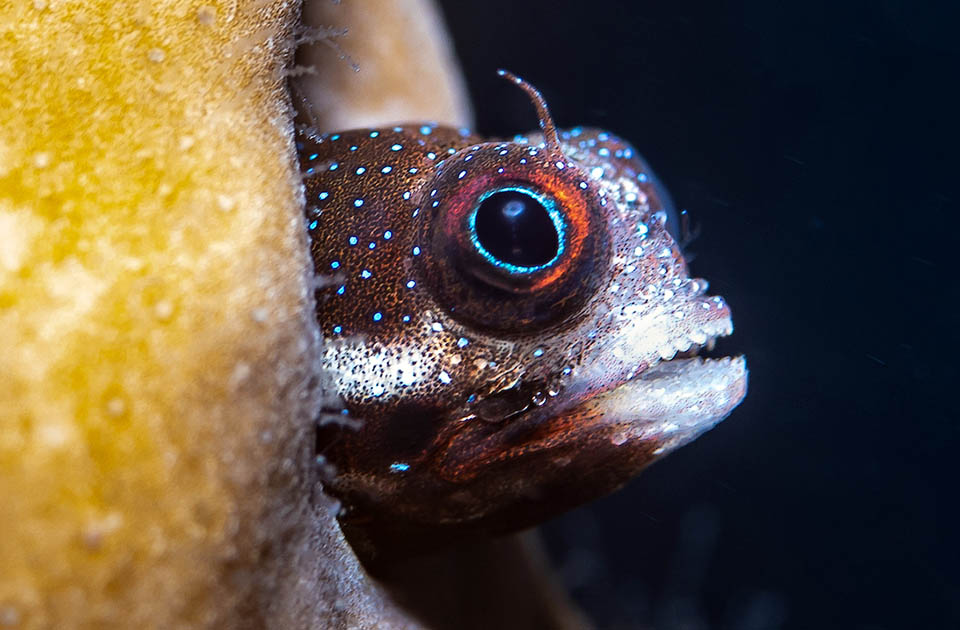
Known as Blue-spotted barnacle blenny, Acanthemblemaria aceroi is a benthic species of the coasts of Colombia and Venezuela © Allison & Carlos Estape
Described only a few years ago, Acanthemblemaria aceroi, Hastings, Eytan&Summers, 2020, belong to the class of the Actinopterygii, the ray-finned fish, to the order of the Blenniiformes and to the family of the Chaenopsidae, that counts 14 genera and about one hundred American species mostly living in tubes taken away from annelids and other invertebrates present on the seabeds. They are small fish, that usually do not exceed the 16 cm, with elongated boty, at times almost anguilliform as is the case of Chaenopsis limbaughi.
Acanthemblemaria aceroi, known in English as “Blue-spotted barnacle blenny”, conversely prefers to take shelter in the old shells of the dead balani, cozy bedrooms on the seabeds as by the way does Hypsoblennius invemar, a species of the same order but inserted in the family of the Blenniidae.
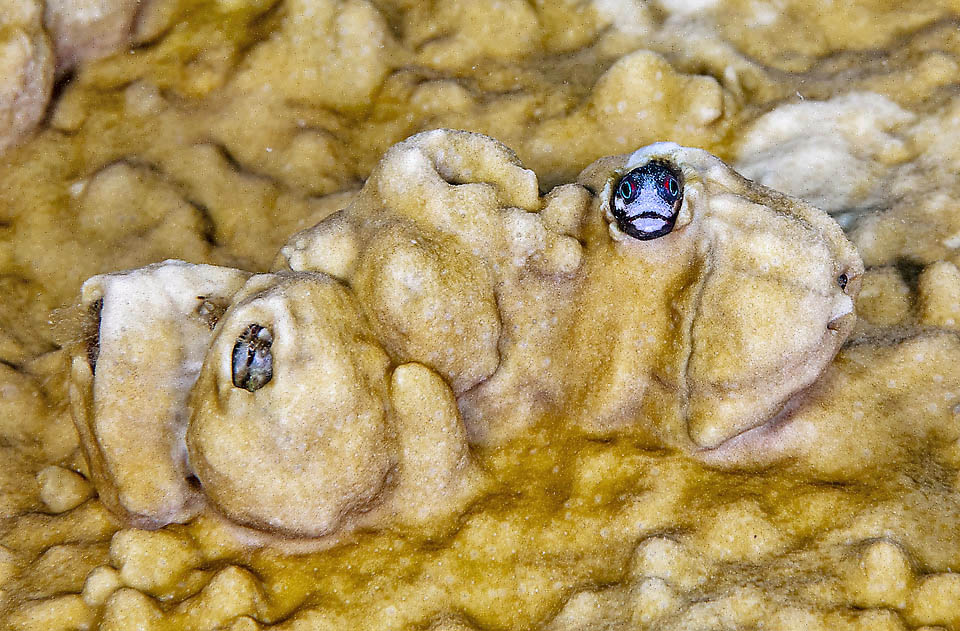
Maximum 4,5 cm long, lives between 1 and 33 m of depth in madreporic environment or rocks covered with old shells of dead balani where often shelters © Allison & Carlos Estape
The name of the genus Acanthemblemaria originates in Greek from “akantha”, spine, because of the short and strong spines present on the head, and from Emblemaria, the name of the genus created by D. S. Jordan & C. H. Gilbert, 1883, for another Chaenopsidae that looks like it.
In short, it would be a spiny Emblemaria.
Conversely, the specific term aceroi honours Arturo Acero Pizarro, professor associated with the Universidad Nacional de Colombia and known for numerous works on the species and the taxonomy of the Chaenopsidae.
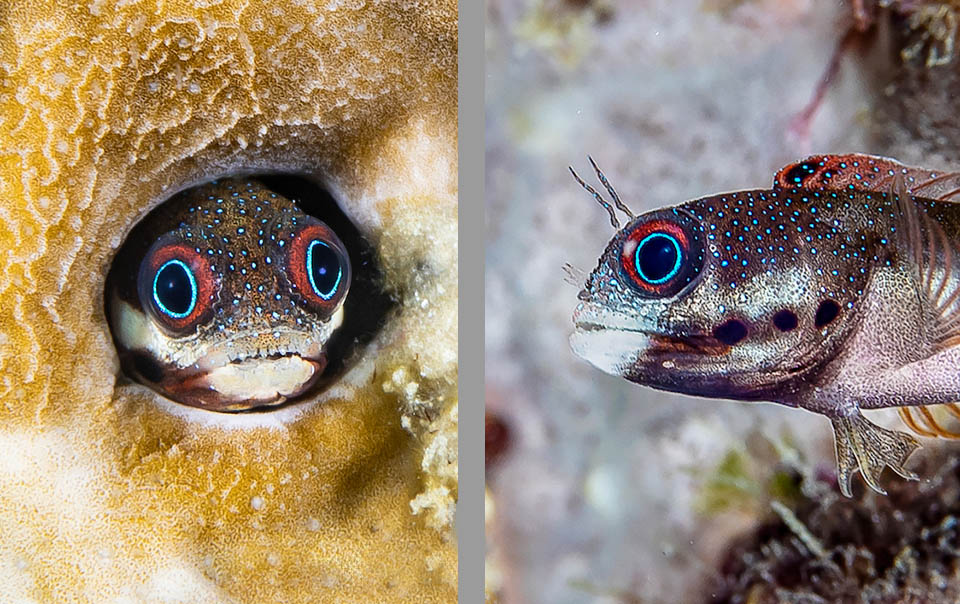
Left, male on the front door with the typical eyes with the red iris emphasized by the inner blue circle. Right, we note the usual supraorbital not ramified tendrils unlike the smaller ones of the front nostrils. The dorsal fin has a typical black spot and the pelvic ones are inserted before the base of the pectorals © Allison & Carlos Estape
Zoogeography
The Blue-spotted barnacle blenny is found only in western Atlantic, endemic to the coasts of Colombia and of Venezuela.
Ecology-Habitat
Acanthemblemaria aceroi is a benthic species present, between 1 and 33 m of depth, on madreporic formations and rocks covered with encrustations and shells of dead balani, where lives feeding on zooplankton, small shrimps and crabs moving on the seabeds.
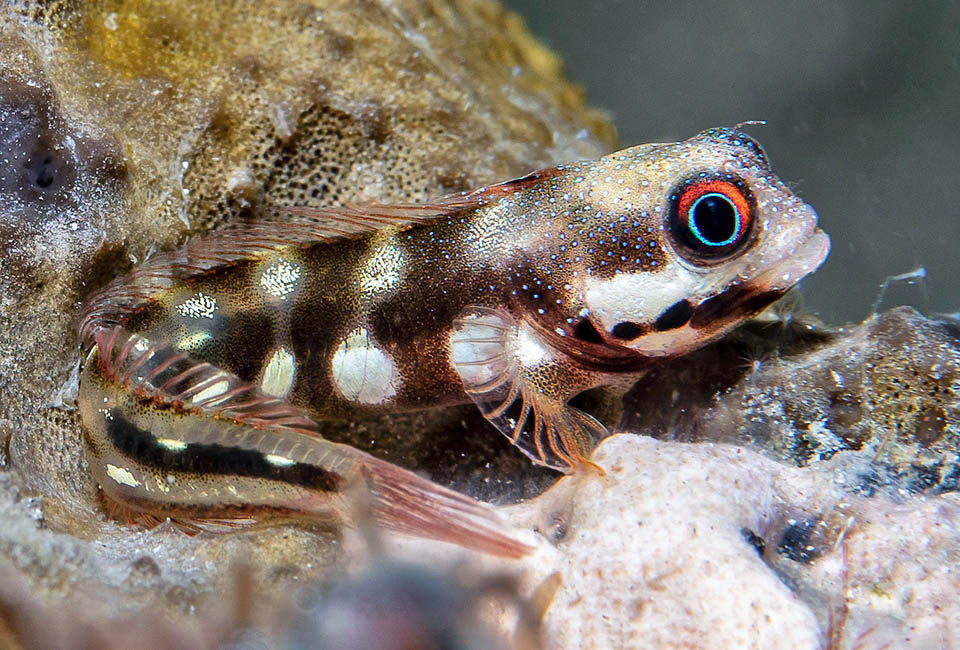
Females don’t have dark head and first dorsal section like the males, but in both cases is present a tiny blue dotting © Allison & Carlos Estape
Morphophysiology
Acanthemblemaria aceroi gets a maximum length of 4,5 cm, size of the holotype.
The body, elongated but robust, has a short head with steep front profile armed with small short and blunt spines, present on the snout up to behind the eyes but not on the nape.
Over the eyes, characterized by a showy orange red iris emphasized by a thin inner bright blue ring, we note a long tendril, usually not ramified unlike those, smaller, of the front nostrils, whilst the rear nostrils display only an edge raised on the front.
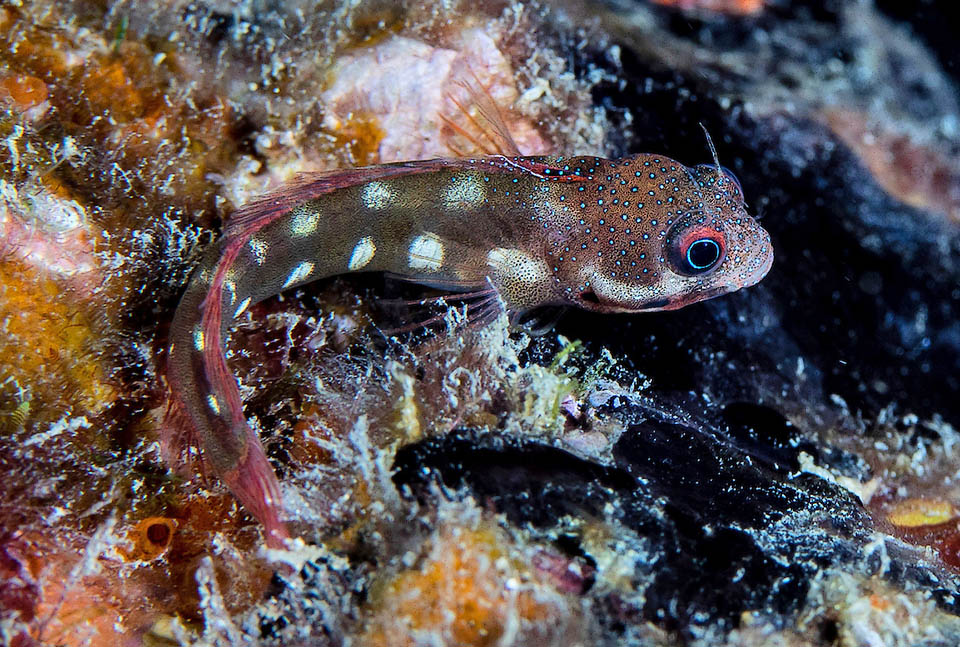
Male. Little is known about Acanthemblemaria aceroi reproduction, described only in 2020, but t is thought it guards the eggs laid in the balani © Allison & Carlos Estape
The scales are missing and also the lateral line is absent. The jaw extends beyond the back side of the eye and we note 2 rows of well developed teeth: about 13 in the internal row and 11 in the outer one.
The rays of the fins are not ramified. The dorsal has 11-13 spiny and after a small notch 12-14 soft; the anal has 2 spiny rays and 21-24 unarmed; the pectoral ones count 12-15 soft rays; the pelvic, inserted before the base of the pectoral ones, 1 spiny ray and 2-3 unarmed, finally the caudal is truncated. The body tends to brown with rows of rows of dark and white spots.
The body and the front part of the body, decidedly darker in the males, displays a thick and characteristic blue dotting. Moreover, there is also a short white stripe under and beyond the eye, and often, lower, on the back, a white spot.
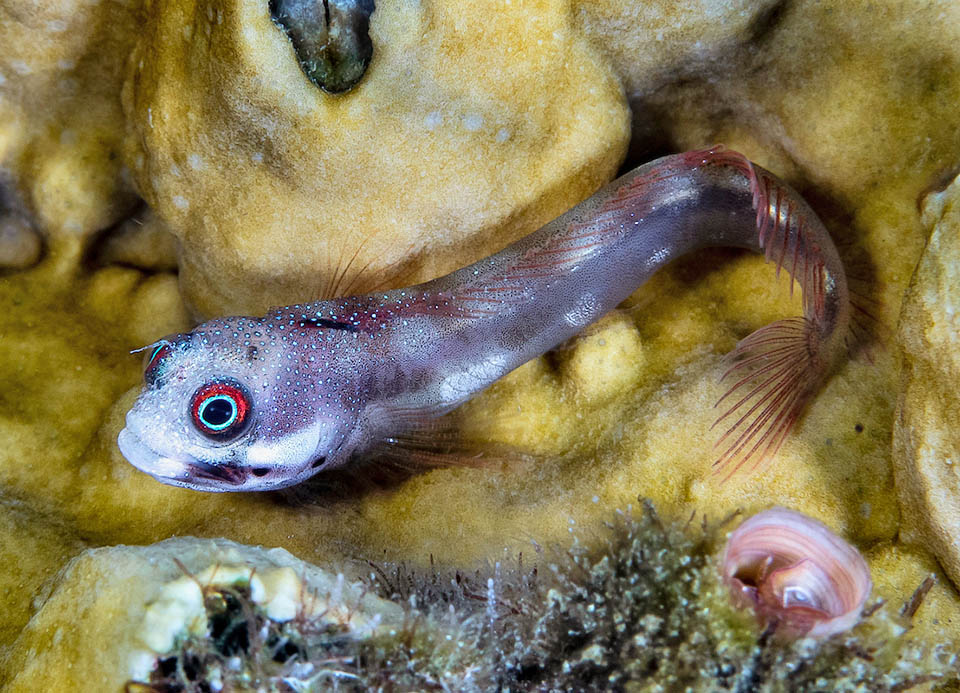
Blue-spotted barnacle blenny does not yet appear in the IUCN Red List, but the fishing vulnerability is minimal and it’s not an endangered species © Allison & Carlos Estape
The fins appear yellowish pink due to the rays that tend to red and we note a black spot between the first two of the dorsal.
Ethology-Reproductive Biology
The reproductive modalities of the Blue-spotted barnacle blenny are little known but it is thought that the eggs are laid in the burrows and monitored until they hatch.
The trend of the populations is unknown and Acanthemblemaria aceroi has not yet been evaluated by the biologists of the IUCN Red List. The fishing vulnerability, very low, marks however just 10 on a scale of 100, and the species presently is not considered as at risk.
→ For general information about FISH please click here.
→ For general information about BONY FISH please click here
→ For general information about CARTILAGINOUS FISH please click here.
→ To appreciate the BIODIVERSITY of BONY FISH please click here.
→ To appreciate the BIODIVERSITY of CARTILAGINOUS FISH please click here.
